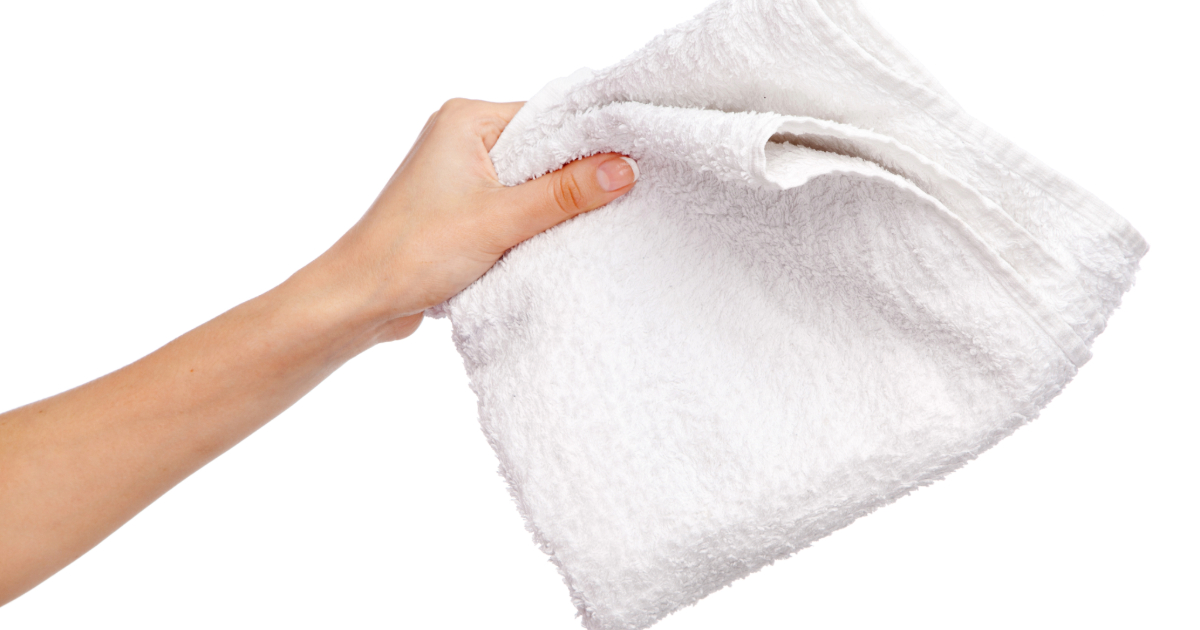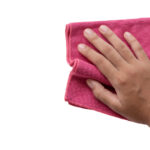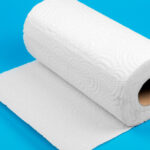Hand towels and kitchen towels may seem interchangeable, but they actually serve different purposes.

Let’s compare hand towels and kitchen towels, — key differences in absorbency, durability, intended use, and care.
What is a Hand Towel?
A hand towel, as the name implies, is a small towel intended for drying your hands. Hand towels are commonly found in bathrooms and powder rooms, either hanging from a towel bar or rack, or folded neatly beside the sink.
Hand towels are made from soft, absorbent fabrics like cotton, microfiber, or linen. Terry cloth cotton is very common. The loops of thread in terry cloth create extra surface area to absorb water.
Compared to kitchen towels, hand towels tend to be smaller, usually around 16 x 30 inches. Sometimes hand towels will have decorative embroidery or designs along the borders or in one corner.
The main purpose of a hand towel is to gently dry your hands after washing. It absorbs water without being too rough on skin. Hand towels also help prevent water spots from building up on faucets or around sinks.
Key Takeaway: A hand towel is a small, absorbent towel made from soft fabric that is intended for drying hands after washing. It is commonly found in bathrooms.
What is a Kitchen Towel?
Kitchen towels, sometimes called dish towels, are designed for heavy-duty use in the kitchen. They may be made from cotton, linen, microfiber blends, or terry cloth.
Kitchen towels are typically larger than hand towels, around 20 x 30 inches. They also tend to be thinner and less plush. The more tightly woven, dense fabric makes kitchen towels very durable and absorbent.
These towels are intended to handle tough kitchen jobs like:
- Drying hands while cooking
- Wiping down counters
- Cleaning spills
- Covering rising dough
- Lifting hot dishes
- Drying clean dishes
So rather than gently patting skin dry, kitchen towels soak up large quantities of water and stand up to heavy use. They can also withstand higher temperatures, which is essential for a busy kitchen.
Key Takeaway: A kitchen towel is a durable, highly absorbent towel made of densely woven fabric. It is designed to handle tough kitchen jobs.
Main Differences Between Hand and Kitchen Towels
While hand towels and kitchen towels may overlap in some areas, there are distinct differences that make each type of towel better suited for certain uses.
Size
- Hand towels are smaller, around 16 x 30 inches. Sometimes they are square or have decorative scalloped borders.
- Kitchen towels tend to be around 20 x 30 inches. The large size provides more surface area for drying dishes or cleaning spills.
Fabric and Absorbency
- Hand towels emphasize softness and gentleness using plush fabrics like terry cloth cotton. They absorb moderate amounts of water.
- Kitchen towels prioritize durability and wicking ability with densely woven, lint-free fabrics. They can absorb large spills.
Intended Use
- Hand towels are for delicate tasks like patting dry hands or faces. They help prevent water marks on surfaces.
- Kitchen towels handle tougher jobs, including drying dishes straight from the dishwasher, wiping sticky spills from floors, and lifting hot pans.
Care and Maintenance
- Hand towels usually require machine washing in cold or warm water, and tumble drying on low. Ironing can help them look crisp.
- Kitchen towels stand up well to hot water, bleach, and high heat drying. They don’t require special care.
When to Use Hand Towels vs Kitchen Towels
Here are some guidelines on when each type of towel works best:
Hand Towels
Ideal for:
- Drying hands after washing
- Gently patting faces dry
- Light dusting and polishing
- Setting beside bathroom sinks as decorative accent
Kitchen Towels
Ideal for:
- Drying hands while cooking
- Lifting hot dishes from oven/microwave
- Covering rising dough
- Laying out ingredients when prepping meals
- Wiping counters as you cook
- Cleaning up spills and messes
- Drying dishes fresh from the dishwasher
Pay attention to the little tags or hem labels when using towels. Hand towels marked “decorative use only” may not stand up to kitchen demands. And dish towels without “decorative” labels can look out of place in bathrooms.
Choosing the right towel for the task makes your linens last longer. It also prevents contamination between raw foods and clean hands.
Proper Care for Hand and Kitchen Towels
To maintain fresh, bacteria-free towels that are ready whenever you need them, follow these care tips:
For Hand Towels:
- Machine wash in cold or warm water with regular detergent
- Tumble dry on low heat or hang dry to prevent shrinking
- Replace every 3-6 months for freshness
- Iron cotton hand towels for crisp folded presentation
For Kitchen Towels:
- Machine wash in hot water with bleach added
- Tumble dry on high heat or hang in sunlight
- Replace more often, every 1-2 months
- No special finishing like ironing required
Washing kitchen towels in hot water with bleach disinfects them, killing germs left behind from raw meat juices, produce dirt, and other contaminants. The high heat drying also helps sanitize them.
Getting in the habit of frequently laundering kitchen towels prevents odor buildup and visible stain rings around the borders. Dirty towels also become less absorbent over time.
By properly caring for hand and kitchen towels, you’ll get the most out of two essential linens.
FAQs
Can you use kitchen towels in the bathroom?
While it’s possible to use kitchen towels in the bathroom, they look rather utilitarian. Most people prefer to use hand towels in bathrooms since they nicely complement the room’s decor. Save thicker, plainer kitchen towels for kitchen tasks only.
Should you dry hands on kitchen towels while cooking?
Yes, it’s perfectly fine to dry hands on kitchen towels between steps while cooking and baking. Just make sure to launder dish towels frequently since they pick up food particles and germs. Consider keeping a dedicated “hand drying” kitchen towel separate from the one used to wipe counters.
How do you fold a hand towel decoratively?
For guests and special events, fold hand towels into thirds lengthwise. Then fold into thirds again widthwise to create a neat square. Experiment with sharp corners or more rounded folds. Place the folded hand towel on a tray or stool beside the guest bathroom’s sink.
How often should you replace kitchen towels?
Plan to replace heavily used kitchen towels every 1-2 months. Signs that dish towels need swapping include visible stains around the borders, thinning fabric with holes, loss of absorbency, and foul odors even after washing. Rotate 5-7 dish towels to always have a fresh supply ready.
Conclusion
Hand towels and kitchen towels serve very different purposes.
Hand towels are intended for delicate drying of skin with soft, plush fabrics.
Kitchen towels take on tougher tasks like drying dishes and cleaning spills using highly durable, ultra-absorbent fabrics.







